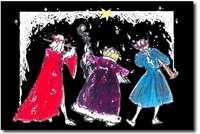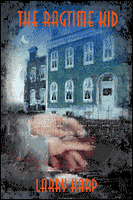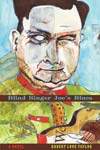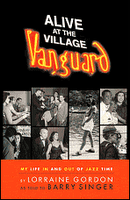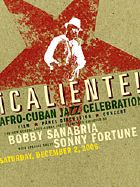The Grammy Awards have been belittled here before and will surely be mocked again in the future. The reader polls remain more important to jazz fans than the little gold statues, and no wonder. The Grammy Awards treat jazz the same as they do polka and Hawaiian music, safely banished from the telecast. Still, I have received many e-mails from jazz record labels touting their nominees, and why not? People have heard of the Grammy, so it’s a legitimate pitch for publicity. Maybe it is not worth the prognosticating effort, but here’s a belated take on the
nominations announced last week, that would be of interest to jazz listeners.
Best Contemporary Jazz Album: This is more or less a fusion catch-all category. Of the nominees, my choice would be Christian Scott’s
Rewind This. This seems to be an uneasy fit in this category, which is why I like it. I would rate Béla Fleck or Mike Stern the front-runners, but I could certainly be wrong, particularly in this category.
Best Jazz Vocal Album: Diana Krall has to be the prohibitive favorite—she does sell CDs, a lot of CDs. Nancy Wilson could be a dark horse, in appreciation for her entire career.
Best Jazz Instrumental Solo: My choice would be Paquito D’Rivera (always a favorite here) for his solo on “Paq Man.” I don’t see him winning this year though. Michael Brecker already owns 11 Grammys, but I think he will be the sentimental choice for his very public battle with MDS (myelodyplastic syndrome) and his efforts to promote blood stem cell donations (completely unrelated to embryonic stem cells), and that would be not be an outrageous choice by any stretch. (More info on his website
here)
Best Jazz Instrumental Album: Chick Corea is a perennial favorite, and if the two titans—Ornette Coleman and Sonny Rollins—cancel each other out I could see him winning again. My vote would be for Rollins. Jack DeJohnette is politically right in line with most of the recording industry, so I could see Trio Beyond as a dark horse, but it is not like he’d be giving an acceptance speech. (Besides, they already have the Dixie Chicks to give political tirades.)
Best Large Jazz Ensemble Album: If predicting, I would say Randy Brecker’s
Some Skunk Funk, which features his brother, wins on his coattails. If voting, I would go for Joe Lovano.
Best Latin Jazz Album: Tough field to assess, but despite being on Artistshare (or maybe that’s a plus), Eddie Palmieri’s stature probably wins out here for his collaboration with Brian Lynch.
In other categories of interest to jazz listeners, I can definitely see Dr. John & the Lower 911 winning the Best Contemporary Blues Album for
Sippiana Hericane as an expression of the Academy’s Katrina sentiments.
For Best Instrumental Composition, Taylor Eigsti, Patrick Williams, and Fred Hersch are competing against two John Williams soundtrack compositions. Hopefully the two John Williams entries cannibalize each other (I’m particularly rooting against the selection from appeasement film
Munich). Hersch is a past nominee, who is well known for his work on behalf of A.I.D.S. causes, which should generate good karma with academy voters. I could also see Patrick Williams, a previous Grammy winner, garnering votes, even though
Elevation has not been widely reviewed (if at all).
Best Instrumental Arrangement nominees are all jazz artists—again I’m guessing Corea here. In the eagerly anticipated Best Instrumental Arrangement Accompanying Vocalist category, Gil Goldstein is nominated twice and the great Slide Hampton also got a nod. My heart is with Hampton, but the winner will come from either the Chris Botti or Tony Bennett albums—after all Grammy Awards are all about sales. Dan Morgenstern is nominated for Best Album Notes for Bluebird’s Fats Waller box and the other nominees are probably hoping he wins.
ECM's Manfred Eicher is nominated for Classical Producer of the Year. He has won before, but he should win most years. All classical listeners should be grateful to Eicher for launching a major division of ECM dedicated contemporary classical music, embracing challenging composers and maintaining ECM’s high production standards.
There are many artists and CDs I would have liked to see nominated, but the most glaring omission had to be Andrew Hills
Time Lines, which I expect to top many critics’ top 10 lists. Hill is an amazing artist, but has not exactly been a commercial powerhouse, so no Grammy love for him.
Gee, those are some bold predictions there. If you only watch the award ceremony, you probably won’t know how wildly off-base they were. You’ll have to go hunting on the internet for the full list of winners. Jazz, blues, and classical are stuck in the Grammy ghetto with the traditional Hawaiian albums (there were indeed five new ones to nominate this year). Until they embrace more than bubble gum pop songs, jazz listeners will not be able to take them too seriously. That does not mean the jazz winners shouldn’t take satisfaction in winning or that their publicists shouldn’t try to make what hay they can. Any recognition for jazz artists is a good thing.


